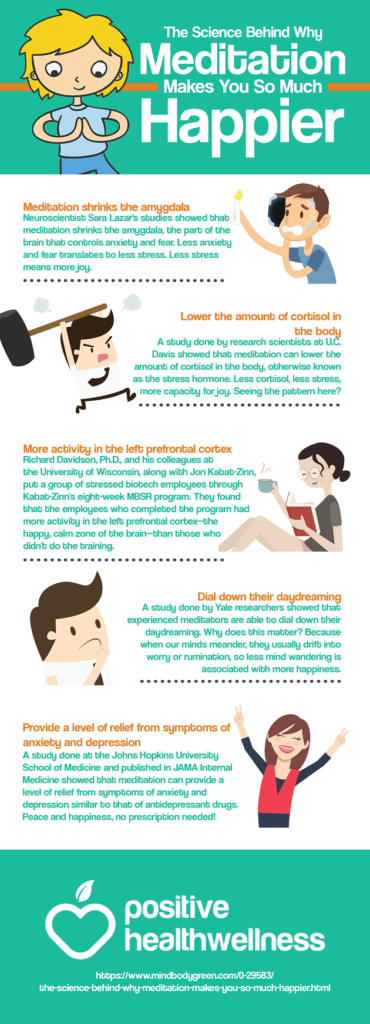 Meditation appears to slow aging. Those meditating five years or more were 12 years younger than their chronological age.
Meditation appears to slow aging. Those meditating five years or more were 12 years younger than their chronological age.
15 R.K. Wallace, M.C. Dillbeck, E. Jacobe, B. Harrington, International Journal of Neuroscience 16 (1982): 53-58.
Meditation has long been considered a beneficial practice. But what is meditation? Ask that questions of any practitioner and you’re likely to get a number of different answers. There is sitting meditation, walking meditation, sound meditation, meditation with a mantra, following the breath, focusing on thought content. Meditation can also be secular or religious.
The following is taken from the National Institute of Health, NCCAM site:
http://nccam.nih.gov/health/meditation/overview.htm
“Most types of meditation have four elements in common:
- A quiet location. Meditation is usually practiced in a quiet place with as few distractions as possible. This can be particularly helpful for beginners.
- A specific, comfortable posture. Depending on the type being practiced, meditation can be done while sitting, lying down, standing, walking, or in other positions.
- A focus of attention. Focusing one’s attention is usually a part of meditation. For example, the meditator may focus on a mantra (a specially chosen word or set of words), an object, or the sensations of the breath. Some forms of meditation involve paying attention to whatever is the dominant content of consciousness.
- An open attitude. Having an open attitude during meditation means letting distractions come and go naturally without judging them. When the attention goes to distracting or wandering thoughts, they are not suppressed; instead, the meditator gently brings attention back to the focus. In some types of meditation, the meditator learns to “observe” thoughts and emotions while meditating.”
 Click on the infographic on the right for a larger view of “The Science Behind Why Meditation Makes You so Much Happier” courtesy of our friends at “PositiveHealthWellness.com“.
Click on the infographic on the right for a larger view of “The Science Behind Why Meditation Makes You so Much Happier” courtesy of our friends at “PositiveHealthWellness.com“.
One of the first books I read on meditation is: “Shambhala, The Sacred Path of the Warrior” by Trogyam Chungpa Rinpoche
Another that revived my practice is: “Opening the Hand of Thought” by Kosho Uchiyama,
Both are written from the spiritual perspective but the meditation techniques taught in these books can also be implemented in a secular fashion.
Really, there are numerous texts and methods out there. If you choose to meditate, what is most important, in my opinion, is that you find the practice or technique that resonates with you.







